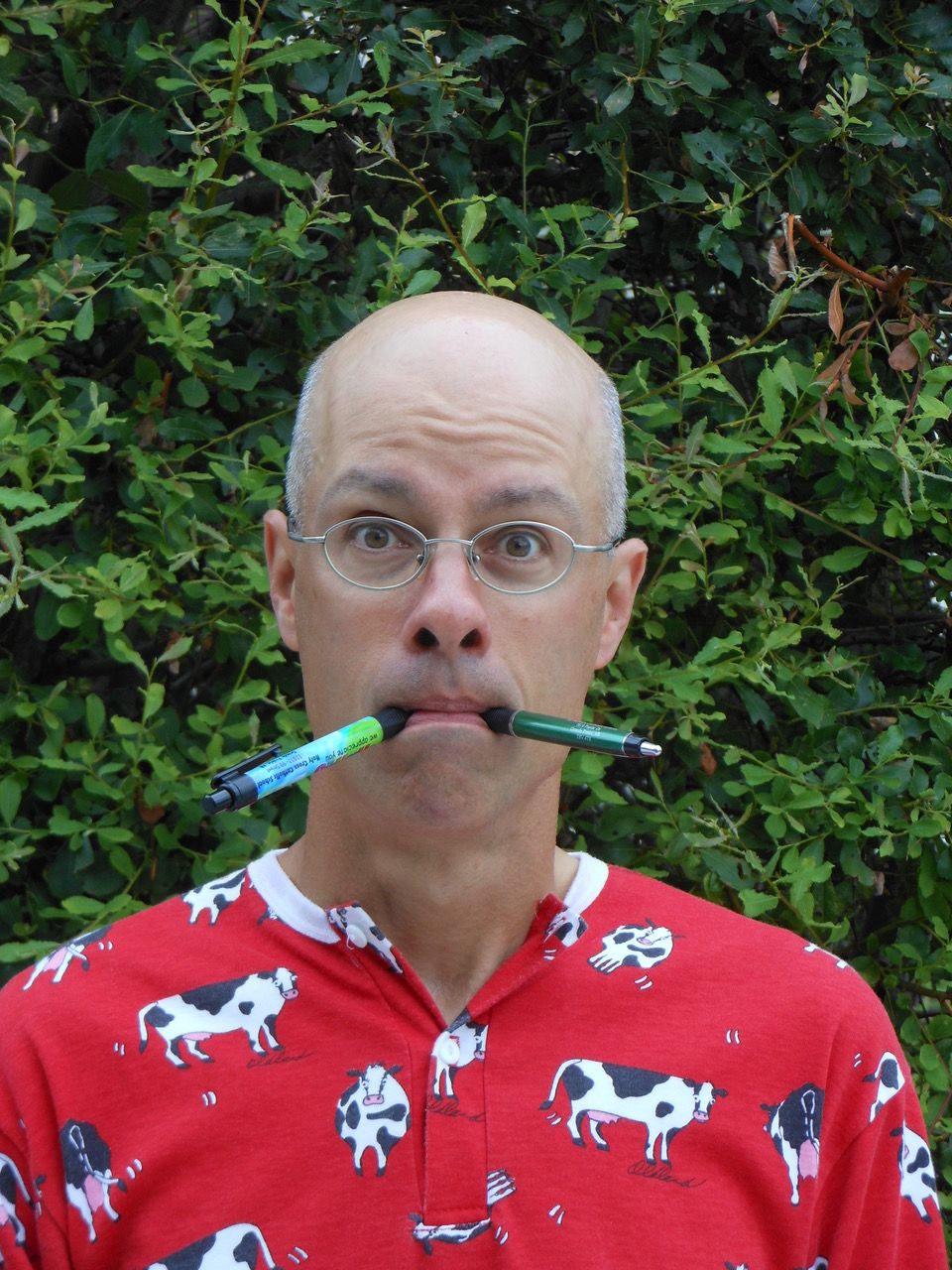Meeting Canadian Writers and Illustrators of Children’s Books
What inspires the writers of the books your students read? How does an illustrator decide what to draw? Is it true that most authors and illustrators don’t know each other? This column features a different Canadian children’s book creator in each issue and shows you the story beyond the covers.
I read a wonderful picture book called Goldibooks and the Wee Bear and loved it. Then I read the tender, touching story Hat Cat by the same author and wondered, “Who wrote these great stories?” The answer was Canadian author Troy Wilson, living in Victoria, BC. So I asked him some questions.
Were stories important to you when you were growing up?

Did you always want to be a writer? And a creator of children’s books?
I wanted to be a writer or cartoonist from second grade onwards. But I didn’t envision any genre in particular.
So how did your first book come about?
For many years, I did not put in the effort to make my dreams a reality. Bursts of energy, but nothing consistent. Finally, I got more serious at age 30. After a year of sustained effort, I got an opinion piece published in a local paper, won third place in a Postcard Fiction competition, and signed the contract for my first picture book, Perfect Man, which was nominated for the Blue Spruce Award. It’s a superhero book celebrating the superpowers of students and teachers alike. It’s still in print, which is wonderful.
I was writing all kinds of short pieces, and picture books just happened to be among them. Over time, I stopped writing the other stuff and kept writing picture books. I fell in love with them. Because really, what’s not to love?!
Did you take writing courses?
I’ve taken three Creative Writing classes in my life. All in Nanaimo, BC. All at a relatively young age. And all essential.
In high school, I took a Creative Writing class with Rodney Brown. He was the first teacher to be tougher on my writing, to really push me to reach higher levels. His feedback was insightful, and his praise meant the world.
Right after high school, I took Creative Writing classes with Ron Smith and Steve Guppy at Malaspina College (now Vancouver Island University). Ron was very much in the same tough-love mold as Rodney Brown. Steve was kinder and gentler, but still helped my growth immensely.
Your book The Sinking of Captain Otter is dedicated to your elementary school teacher. Why?
In Grade One, Mrs. Eivindson read a little book, which I wrote and drew, to the class. They laughed when they were supposed to laugh and cheered when they were supposed to cheer. This meant so much to me, especially given my low self-esteem. I didn’t like a lot of these kids, and a lot of them didn’t like me, but I was able to entertain them regardless. Surely, this planted a seed in me. This was my very first picture book to be read aloud in a school by a teacher.
Years later, that little book—Captain Otter—inspired The Sinking of Captain Otter, a picture book published by Owlkids. How could I not dedicate it to Mrs. Eivindson and
my six-year-old self?
Hat Cat was inspired by your grandfather but also by other books, like Waiting For The Whales by Sheryl McFarlane and Ron Lightburn. Do you find that memories and books contribute to your writing ideas?
Memories and books bring me lots of ideas. And here is a note about being inspired by memories. When you’re writing fiction, you don’t have to stick to the exact truth. Keep only what the made-up story needs. As with the old man in Hat Cat, my grandfather did indeed feed squirrels from his hat. But unlike the old man in Hat Cat, he was not a fan of cats. And unlike the old man in Hat Cat, he never lived alone; he passed on before his wife did. With a made-up story, that story is the boss, not the actual events. The actual events are just a springboard, just a spark.
How hard is it to find the right voice to tell your story?
For me, finding the right voice is not one of the hard parts. But for others, it is. We all have different hard parts. Also, just because I don’t find it hard doesn’t mean I find it easy. Very little of the writing process is easy.
Is writing children’s books getting easier or harder?
Both. It is definitely easier to do the types of things I have already done. But I am not content to only do what I have already done. I am always striving to do more and better.
I am going farther and deeper than I would have before. I see flaws that I wouldn’t have seen before, and I see opportunities for improvement that I wouldn’t have seen before.
That is why it doesn’t feel easier—for me or for learners of any age. But it is important to acknowledge and celebrate our improvement. We can indeed do more. We have indeed improved. Even if it doesn’t always feel that way.
Do you read lots of children’s books? Any favourites?
I continue to read a ton of picture books, both new and old. If you want to write a certain kind of book, read that kind of book—a lot of books. And if you don’t like reading that kind of book, maybe that’s not the kind of book you should write.
Three of my many favourite picture books are The Boy With Flowers in His Hair by Jarvis, Knot Cannot by Tiffany Stone and Mike Lowery, and Wolfie the Bunny by Ame Dyckman
and Zachariah O.Hora.
Check out Troy Wilson’s books here: www.troystory.ca
Margriet Ruurs
Margriet Ruurs is the author of over 40 books for children and conducts (ZOOM) school presentations: margrietruurs.com
Enjoy her travel-and-books blog here: globetrottingbooklovers.com
This article is featured in Canadian Teacher Magazine’s Winter 2023 issue.

